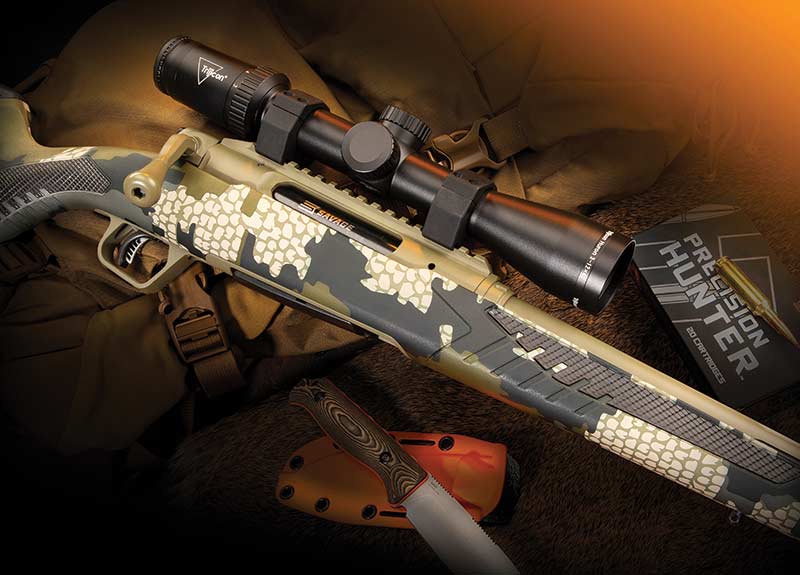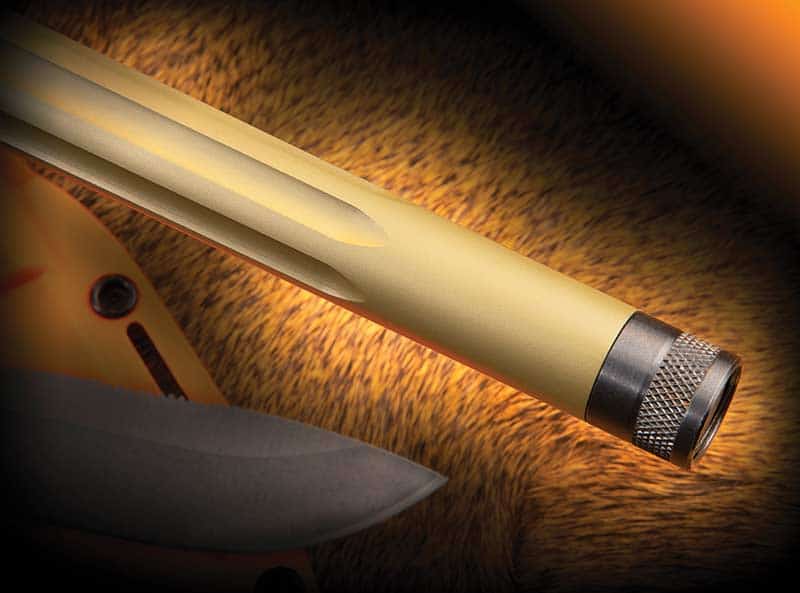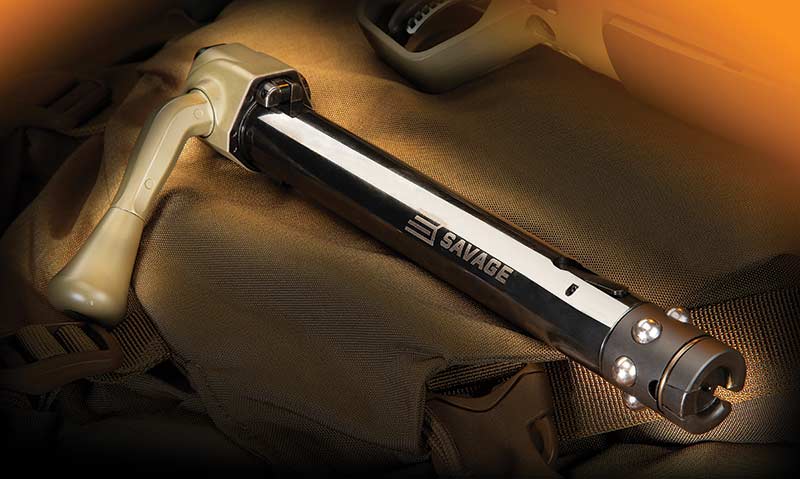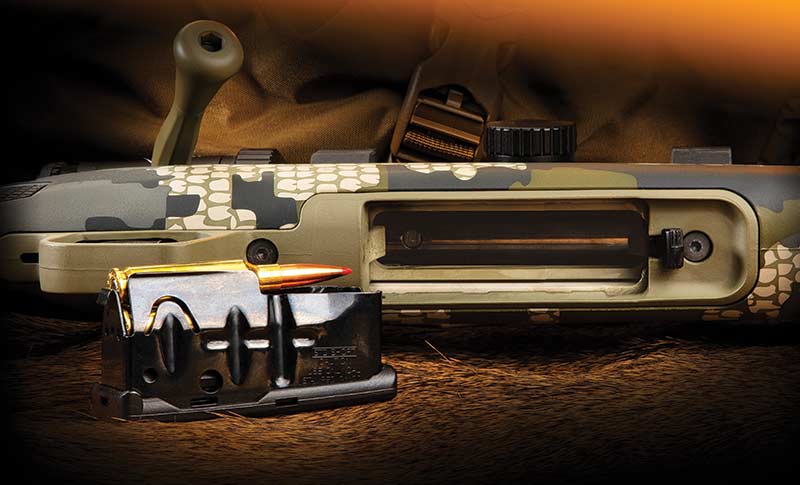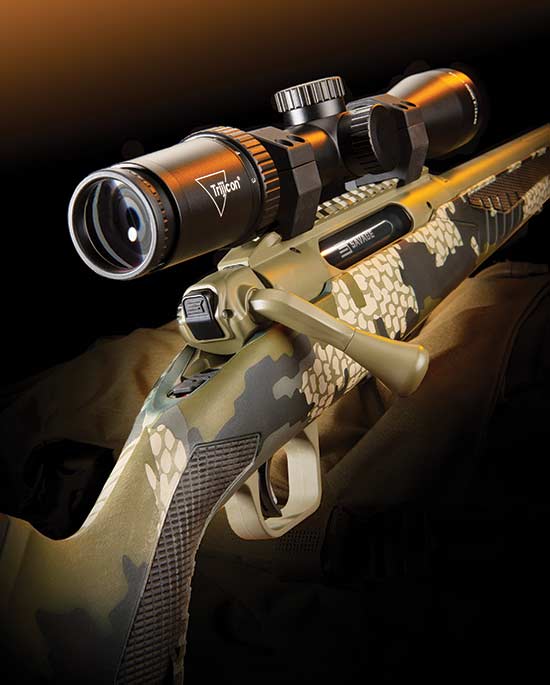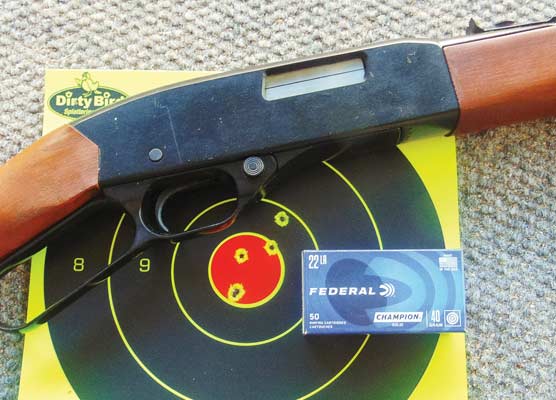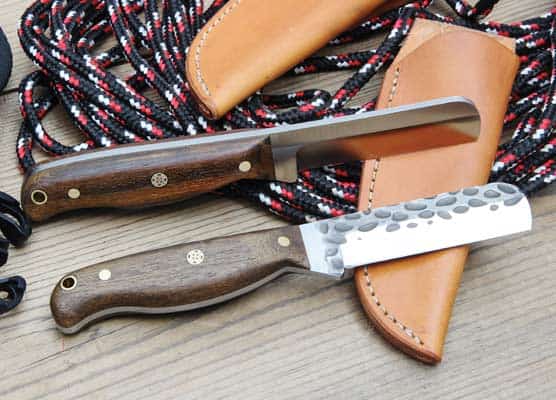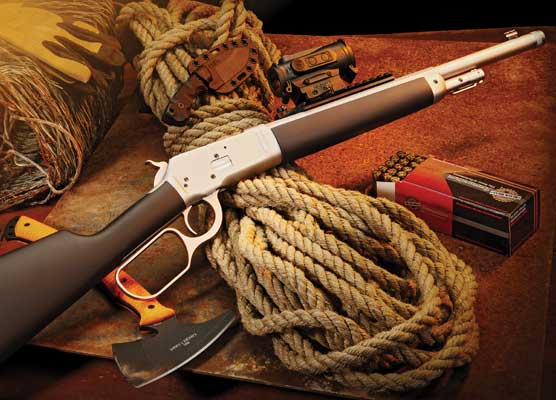Savage Impulse
Straight-Pull Rifle
Old but radical design now for the 21st Century
“Shoot again!” I bellowed, with no one nearby to zipper my mouth. Silence might have improved the outcome. His first shot had clearly missed. And the poor fellow was still closing the bolt on a second round when the elk left. “We’ll get him,” I cooed unconvincingly.
Firing fast without aim is pointless. So is firing too late. To seize every chance, you must use time efficiently, wasting neither thought nor movement.
While recoil wedges some delay between shots, a hunter should be able run their bolt action fast enough and smoothly enough to come out of recoil ready to fire again. Savage has just made it easier.
The new Impulse straight-pull rifle absolves you of rotating the bolt. A quick back-and-forth flick of your hand is enough to extract, eject, chamber another round and lock the bolt. Six ball bearings in the bolt head — “Hexlock” — are thrust outward by a spring-loaded rod to engage a recessed barrel extension as the bolt comes into battery. With the bolt handle fully forward, there’s no way they can retract, no way the bolt can budge. Once shoved to its forward position, the bolt can’t be pulled (or accidentally bumped) out of battery. Firing releases the mechanism for a fast reload. To unlock the bolt manually, you thumb a tab on the bolt’s tail. This tab, or button, is also a cocking indicator; it does not tell you whether or not the chamber is loaded.
History
The straight-pull idea dates at least as far back as the 1880s, in a series of rifles designed mainly by Ferdinand Ritter von Mannlicher, hired by Austria’s arms factory in 1877. Refinements brought about the twin-lug Model of 1895. Initially bored for the 8x50R cartridge, it served Austro-Hungarian forces in WW I. Two helical grooves in the bolt body rotated the locking surfaces with a straight tug on the bolt handle. Surface angles in the receiver were such the first 20mm of retraction moved the bolt head just 3mm, to add mechanical advantage for primary extraction.
The Mannlicher of 1895 was clearly the template for Canada’s .303 straight-pull Ross rifles, 1903 to 1918. The first were failures, Mark IIs in 1905 and 1907 much improved — the latter to bottle the high pressures of the .280 Ross round. Canadian forces took the Model of 1910 to France in 1915 but found it unreliable. Dirt in bolt cuts and races seized actions; “war-time” tolerances in British .303 ammo caused cycling problems. Though a rare event, a Ross could be assembled in a way enabling it to fire without lock-up, sending the bolt into the shooter’s face.
Cartridges with higher pressures begged stronger, more dependable designs. They would come in sporting rifles to follow — without rotating bolt heads.
Back To The Future
The recessed bolt head of the new Savage has a bolt-face extractor, a slot for the mechanical ejector. The bolt release is in a familiar place on the receiver’s left flank. To function, it must be moved forward, then depressed, an easy rocking motion with your thumb. Before reading the manual (c’mon, I’ve been pulling bolts since Sullivan hosted the Beatles), I almost ruptured my thumb pressing the release without a forward nudge.
Cleverly, engineers designed a removable bolt handle with your choice of five operating angles. The handle also functions on the left side of the bolt. To slip it off, remove the bolt and depress the button opposite the handle. Slide the cap off the keyed handle post. Change angles; replace the cap. To install the bolt on the left side, unscrew the post and swap it with the handle, then re-assemble. Of course, cases still tumble out the right-side port.
You can remove the bolt head too. With the bolt out, uncock it by pressing the extraction plunger just forward of the bolt shroud and letting the bolt handle pivot forward. Depress the rear of the bolt head lock plunger behind the bolt head, rotate the head counter-clockwise and pull it off.
The bolt knob suits me, but Savage gave it threads (a half inch of 5/16-24 UNF). A quarter-inch hex wrench is all you need to switch it out.
Because the bolt locks directly to a barrel extension, the Impulse’s receiver needs no bottle breech pressures — so it’s of lightweight alloy. An integral Picatinny rail has 20 minutes of gain for long shooting. The receiver is held to Savage’s AccuStock (with imbedded forend rail) by twin action screws, fore and aft of the magazine well. A hole behind the guard affords access to the AccuTrigger weight-of-pull screw. A tool is supplied for this adjustment.
The Impulse comes with snap-on combs and butt spacers so you can adapt the AccuFit butt-stock to your body and shooting style, and to the sightline.
Available in three configurations and a range of chamberings, the Impulse was predictably scarce when announced months ago. I was fortunate to get for range trials the version and chambering most appealing to me: an Impulse Big Game in .300 Winchester Magnum.
Beauty Is A Beast
This rifle is as eye-catching in hand as in photos, the Kuiu Verde 2.0 finish of its synthetic stock a pleasing complement to the Hazel Green Cerakoting on its receiver and 24″ fluted, threaded carbon steel barrel. The barrel is stiff. Its heft contributes to the slightly nose-heavy balance I prefer and to the rifle’s considerable weight: a couple of ounces shy of 9 lbs. The steel detachable box magazine, with forward latch, holds three rounds. As shipped, the trigger broke at 3¾ lbs. on my Timney scale.
On this .300 I cinched a Burris 4.5-14x scope in Burris rings that put the objective bell just off the barrel. Though the next-higher AccuFit comb might have supported my cheek better prone, the comb on the rifle as received felt ideal in other positions so I didn’t switch it. Other than swab the bore (it appeared to have endured range trials elsewhere without cleaning), I did nothing to the rifle before bore-sighting.
At the range, the bolt scooped a cartridge from the magazine and the bolt handle snicked forward to lock. Behind the scope, I paused. After decades of turning solid lugs into machined cuts, why trust six loose ball bearings to bottle 60,000 psi and keep a non-rotating bolt from skating through my noggin?
With no good reason to either abort the project or continue, I compromised. Off the bench, I cocked my wrist to give the bolt a clear path into the hills behind and let fly. Okay — Roll your eyes.
No Fail
Rifle intact and case inspection done, I was soon perforating the middle of a 100-yard target. First groups, with 180-grain Hornady Interbond loads averaged 1.1″. Great! But the winner of the day was Federal’s 200-grain Terminal Ascent ammo. It kept sending bullets into 0.8″. The difference is academic. At 400 yards either load from this rifle would make a grapefruit quake in its boots, if grapefruit had boots.
Feeding was without fault. There were no failures to extract or eject. Soon I was flicking the bolt as naturally as if it were the forend of a pump shotgun — instead of subconsciously nudging the knob up after each shot as was my tendency at first. The meaty barrel and well-proportioned stock, with generous cushioning from the butt-pad, held recoil to a level I’ve come to expect from .30-06 loads.
The Big Question
Is a straight-pull rifle really that much faster than a turn-bolt? After all, a hunter can cycle either during recoil and recovery. You may well have fired quick follow-ups with traditional bolt-actions.
Having used a few other straight-pull rifles since Blaser introduced its Model 93 more than 25 years ago, I’ve found their main advantage lies more in the direction of hand motion than in a shorter stroke or faster cycling. Lifting a bolt handle to cock and extract, you rotate the rifle. It may not be noticeable unless you heave on a sticky case, but the twist is there. Straight-pull bolts in the Savage rifles move in the direction of recoil only.
Firing straight-pull rifles at moving targets and at game offhand, I’m on target faster because the sight stays nearer the point of aim. Also, absent the need to start a camming action with the bolt, there’s less tendency to drop the rifle below sightline for leverage. I’ve shot game offhand in thickets with straight-pull rifles, and prone across prairies. While I’m not peddling my Mausers and Springfields, a straight-pull action is faster.
Some shooters struggle with a straight-pull early on. The problem is habit. Lift a handle designed instead to be pulled, even for an instant, and you’ve bound the bolt, lost time and squandered your effort. Exiting an unfamiliar automobile, I often fumble for the door latch and may try to move it the wrong way. After 220,000 miles in my ancient Suzuki Sidekick, I could open its door in my sleep. Straight-pull rifles exact no more effort than turn-bolts — provided you break the turn-bolt habit.
Price Please
My penchant for pretty walnut has, over time, dulled my appetite for synthetic-stocked rifles. But the arresting colors of this Impulse, a slick, quick bolt, unique lock-up and outstanding accuracy with stiff hunting loads warranted an exception to my rule. “Please send price,” I wired the people who’d shipped the rifle. “Sorry, we need that one back,” came the reply. “We have too few to go around at the moment.” Surely there are more available now.
Besides .300 Winchester, the Big Game version of the Impulse comes in .243 and 6.5 Creedmoor, .308, .30-06 and .300 WSM. The first four on the list have 22″ barrels and four-shot magazines. They weigh a couple of ounces less than the magnums. At this time, all retail at $1,447.
Savage also catalogs a Hog Hunter with the same action but with different stock and metal finishes. It comes in 6.5 Creedmoor, .308, .30-06 and .300 Winchester. Barrel lengths are 20″, 18″, 20″ and 24″ respectively. It’s priced at $1,377. So is the Impulse Predator, again with its own look, in .22-250, .243, 6.5 Creedmoor and .308. All Predators have 20″ barrels and feed from a 10-shot AICS magazine.
